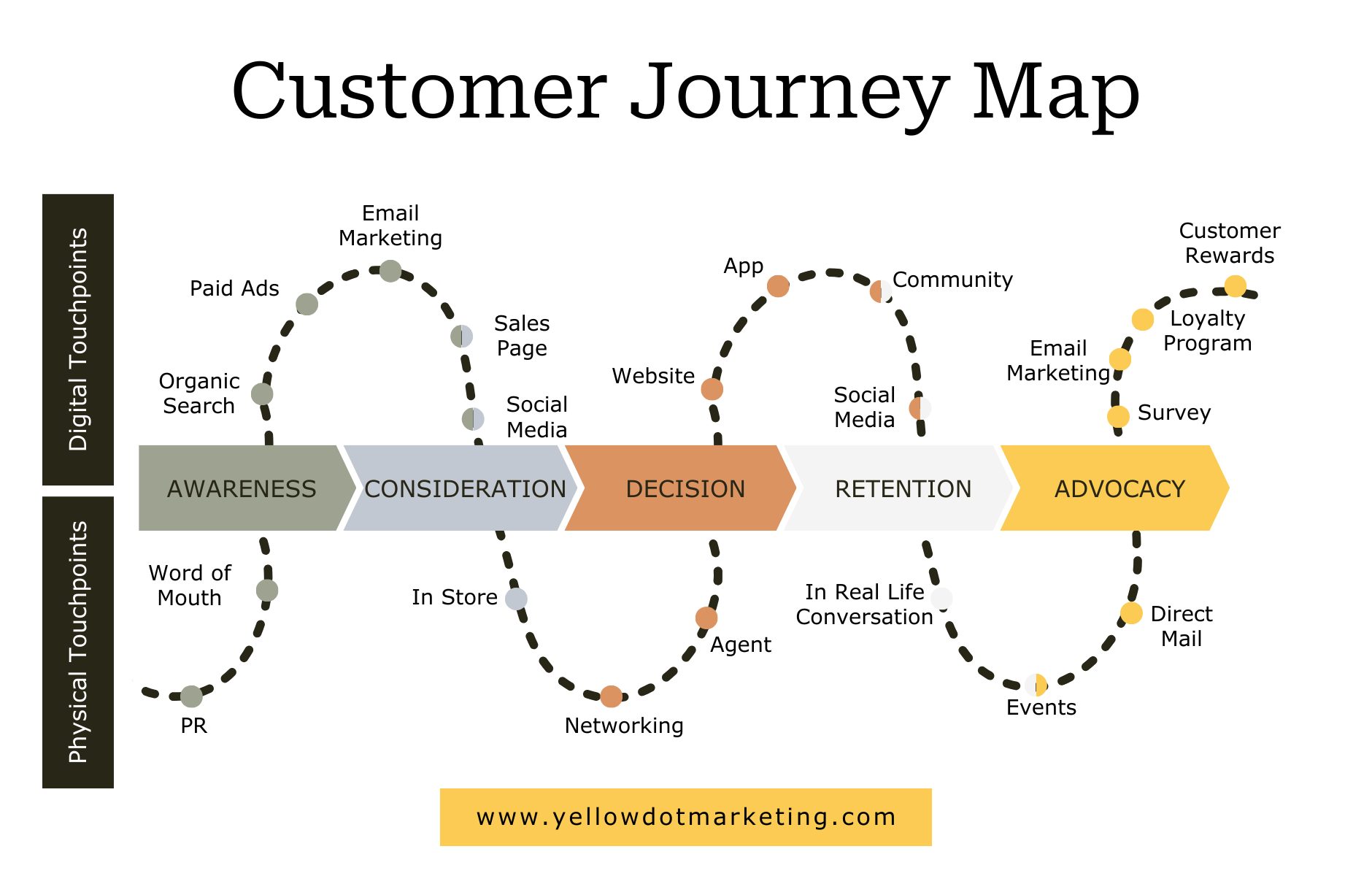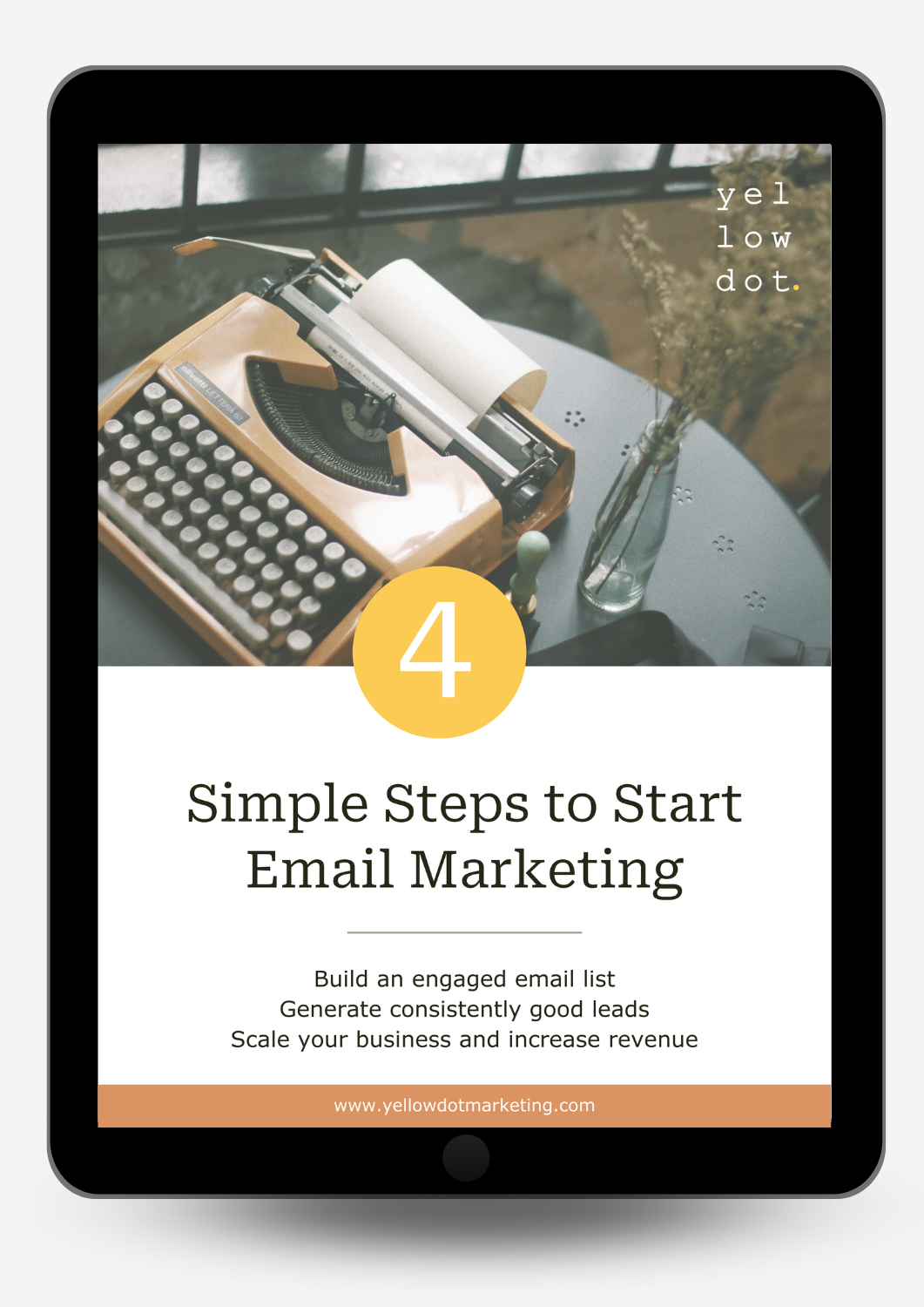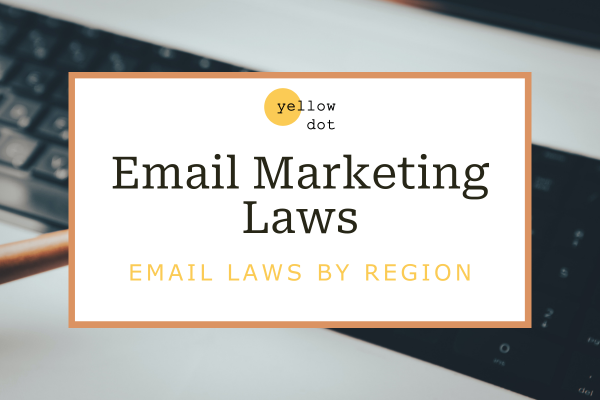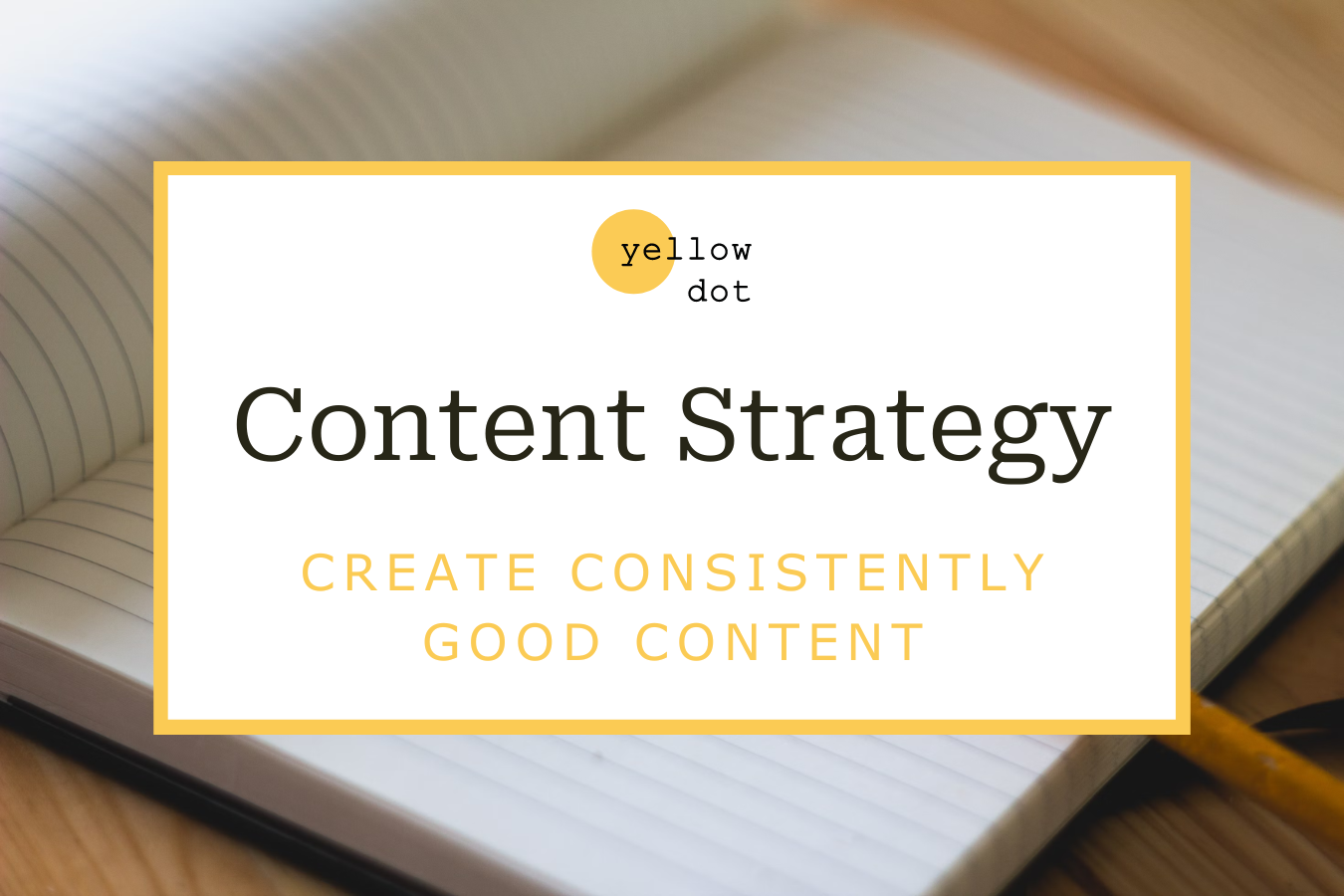Ever wondered why some customers keep coming back while others don’t stick around? This is where customer journey mapping comes in.
Customer journey mapping is a powerful tool to visualise your customers’ experiences and touchpoints with your business from first contact, to ongoing engagement.
Imagine you’re about to embark on a road trip. Now, wouldn’t a map be handy to guide you? Similarly, a customer journey map guides you in navigating the twists and turns of your customer experiences, making it a game-changer for your businesses.
What is Customer Journey Mapping?
Imagine the customer journey map as Google Maps for your business. It visualises the customer’s experience with your business, from the beginning to the end. It involves mapping out your customer experience in a customer experience mapping template, which will guide the decisions you make in how to interact with your customers at all touchpoints. This fantastic swiss-army-knife of a tool helps businesses, especially service-based businesses, gain insights into where and how to improve customer interactions.
Simply, it’s like having a cheat sheet to your customer’s heart.
Benefits of customer mapping and customer journey mapping
Customer mapping and customer journey mapping are powerful tools that bring game-changing rewards for your business, turning satisfied customers into loyal advocates. Here’s why it’s worth investing time and resources into these activities:
🟡 Enhanced understanding: Gain a deeper insight into your customers’ behaviour, preferences, wants, and needs, so you can proactively address these as well as pain points and difficulties they may face.
🟡 Improved customer experience: Understand your customers’ journey and identify areas for improvement to create a unique and satisfying experience.
🟡 Increased customer engagement: With a well-crafted customer journey, your customers are more likely to interact with your brand and use your services continuously.
🟡 Improved retention rate: A positive customer experience can lead to increased customer loyalty and higher customer retention.
🟡 Streamlining internal processes: By identifying and mapping every touchpoint, your business can work towards improving and streamlining operational workflows.
🟡 Boost in revenue: Happy and loyal customers are likely to spend more, contributing significantly to your business’s bottom-line revenue.
🟡 Competitive edge: Understanding your customer’s journey empowers you to deliver what your competitors aren’t, giving you a unique place in the market.

Getting started with customer journey mapping
1. Customer mapping with customer personas
Before you do anything else, create detailed profiles of your target customers. Here’s a quick guide:
Demographics: Start with the basics—age, gender, location, and occupation. Then, dive deeper into their hobbies, interests, and lifestyle choices. Urbanite or suburban lover? Homebody or adventurer? The list goes on…
Preferences and behaviours: Understand what they love. What products or services are they using? Identify their preferred brands and whether they lean towards trends or tradition.
Pain points: Discover their challenges. Are they pressed for time, budget-conscious or seeking personalisation? Knowing their pain points allows you to position your business as the solution.
Communication style: Not everyone communicates the same way. Identify whether they prefer emails, social media engagement or direct calls.
Decision-making process: Uncover how they make choices. Do they research extensively or make spontaneous decisions? Consider the influence of reviews, recommendations, or expert opinions.
Goals and aspirations: Peek into their future. What are their short-term and long-term goals? Align your service as a valuable companion on their journey.
Bring it all together. Give your persona a name, a face and a story. For instance, “Adventure-Seeker Amy,” a busy urban professional who craves convenience and loves exploring new destinations.
Customer mapping involves regularly revisiting and refining these personas as your business evolves. By doing so, you’re not just targeting an audience—you’re building relationships with individuals.
It’s not about creating customers; it’s about creating connections. Like dating, you’ve got to know who you’re after before you plan your seduction!

2. Identify touchpoints
Next, identify all possible interactions your customer can have with your service: Websites, social media, phone calls and even in-person interactions.
Service is not just about the product; it’s about all the touchpoints that a customer has with your brand. Online or offline. From websites and social media to phone calls and in-person interactions, map them all out. Remember, a seamless customer journey considers both the digital and physical realms.
3. Map customer actions
Take a stroll in your customer’s shoes. Understand the journey from awareness to post-purchase. For service-based businesses, it’s not just about making a sale; it’s about crafting an experience. Define the stages—awareness, consideration, purchase and post-purchase. Using a customer experience mapping template can make this process easier. This map is your guide through this dynamic landscape.
4. Highlight emotions and pain points
This journey isn’t just about steps; it’s about emotions. Identify the emotional highs and lows at each stage. Pinpoint those pain points where your customers might face challenges or frustrations. After all, a happy customer is a loyal customer.
5. Integrate customer feedback
Your customers are talking—are you listening? Customer mapping isn’t complete without your customers’ feedback – from surveys, reviews and support interactions. Understand their perceptions and expectations at different stages. After all, who’s better at telling your customer’s story than the customer themselves?
6. Align with your business objectives
Every stage of the journey should be a stepping stone towards your business goals. Connect the dots; ensure that every interaction contributes to the overall success and growth of your service. It’s all about making customers your advocates.
7. Consistent messaging across all channels
Communication is key but consistency across all touchpoints is the secret weapon. Determine the most effective channels for communication at each stage. Whether it’s email, social media or carrier pigeons (just kidding), make sure your message is a harmonious melody across different touchpoints.
8. Measure and analyse for improvement
You’re not flying blind; you’ve got instruments. Establish key performance indicators (KPIs) to measure the success of the customer journey. Regularly analyse data to identify areas for improvement. This is where the rubber meets the road.
Use insights gathered to make continuous improvements. Adapt strategies based on changing customer needs and market trends. Flexibility is the name of the game.
9. Leverage technology
In the digital age, technology is your co-pilot. Leverage tools and systems that streamline interactions and improve efficiency. From CRM systems to chatbots, let technology enhance the customer experience, not complicate it. If you’re looking for an email marketing tool that is simple and intuitive, then Mailerlite is my recommendation.

Things to avoid with customer journey mapping:
Effective customer mapping and customer journey mapping brings long-term success. However, there are some pitfalls to watch out for. To ensure your customer journey map delivers the desired results, avoid these common mistakes:
1. Overlooking customer segments: Failing to account for different types of customers with varying preferences and behaviours can lead to a biased or incomplete map.
2. Too complex or too simple: Striking the right balance between the level of detail and simplicity is vital. A cluttered map can be overwhelming, and a sparse one might be ineffective.
3. Insufficient data: Relying solely on assumptions instead of acquiring real-world data and customer feedback can lead to a skewed perception of your customer’s journey.
4. Treating it as a one-time project: Customer journey mapping is an ongoing process. Regular updates are essential due to shifting market trends, customer behaviours, and business objectives.
5. Focusing solely on touchpoints: While identifying touchpoints is essential, don’t forget to look at the customer experience’s context or emotional journey.
6. Lack of alignment with business goals: A customer journey map must be aligned with your business’s overall objectives, strategy, and values.
7. Not monitoring and measuring: Without regularly measuring progress and analysing outcomes, you might miss opportunities for improvement and growth.
To truly understand and connect with your customers, keep these points in mind when developing your customer journey map, and if you need help, feel free to use our customer experience mapping template.

Conclusion
Customer journey mapping is a compass to guide you through the stormy seas of customer experience. As with all business strategies, refinement is key – regular check-ins, testing and changes based on customer feedback will ensure your business stays on the right path.
To help you get started, I’ve created a super handy customer experience mapping template to get you started on navigating towards success in no time!
Remember, the better you know your customer, the better the experience you can offer them. And with enough refinement, most – if not all – of your customers will keep coming back to you.
*The Mailerlite link is an affiliate link. I only recommend products that I use for my own business and my clients. There is no additional charge to you, if you upgrade to a paid account I receive a small commission.
4 Simple Steps to Start Email Marketing
Looking to start email marketing but no idea where to start?

Learn how to:
- Generate leads consistently
- Build an engaged mailing list
- Generate more revenue
But how do you get people onto your list?
Follow the 4 steps to get started.

Email Marketing Laws
Understand email marketing laws, avoid penalties, protect your reputation and build customer trust. Read more…

How to Build an Email List
Do you want to generate more leads for your business? Build an email list! Read more…

Best Email Subject Lines
Discover best email subject lines to engage subscribers, including examples. Read more…
